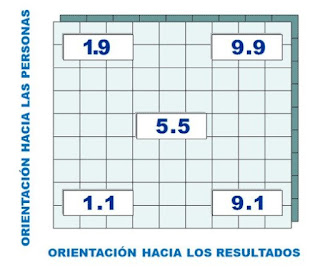BLAKE MOUTON MANAGEMENT MESH
The management mesh is a tool that is used for the description of the leadership style. It is also responsible for identifying specifically five styles of leadership that mix different levels of concern for the task and for the people.
The management mesh model was created by Blake and Mouton (1969), who offered a schematic system through which the attitudes towards the positions in relation to the tasks to be carried out and the people involved are shown. His theory is based on the 9x9 mesh for which they were responsible for creating a very objective way to graphically represent the two-dimensional view of leadership styles.
The management mesh model was created by Blake and Mouton (1969), who offered a schematic system through which the attitudes towards the positions in relation to the tasks to be carried out and the people involved are shown. His theory is based on the 9x9 mesh for which they were responsible for creating a very objective way to graphically represent the two-dimensional view of leadership styles.
Leadership styles according to the management network are the following:
- STYLE 1.1: It is characterized by minimal concern, both for the results and for the team members. Nor does it seek the cohesion of the group.
- STYLES 1.9: It is characterized by a great concern for people and little concern for production tasks. Create a comfortable and safe environment. They also trust that their subordinates will respond with high performance. The concern to meet the needs of social satisfaction, leads to an atmosphere and rhythm of friendly work, although not necessarily productive.
- STYLES 9.1: Represents an orientation of maximum intensity towards the results and minimal to the people. The interests towards production are strongly emphasized. This style supposes a direction of authoritarian character, in which the principle to follow by the manager is performance, but without being interested at all by the interpersonal relations, since they can disturb the good march of the work.
- STYLES 5.5: Managers who apply this style believe that the needs of people and organizations are in conflict, and therefore it is difficult to satisfy both. They believe that the best that can be done is to find an acceptable balance between the needs of the workers and the production goals of the organization. The ideal performance is achieved by keeping the employee's morale at a sufficient level to get an adequate amount of work done.
- STYLES 9.9: It is characterized by the greatest concern regarding results as well as human relationships. In this direction, interests for productivity and interests are considered for the reasons of the subjects involved in it, it contains a high degree of compatibility between the objectives of the employees and the organization. Within the five styles of Blake and Mouton's steering grid, this turns out to be ideal.



Comentarios
Publicar un comentario